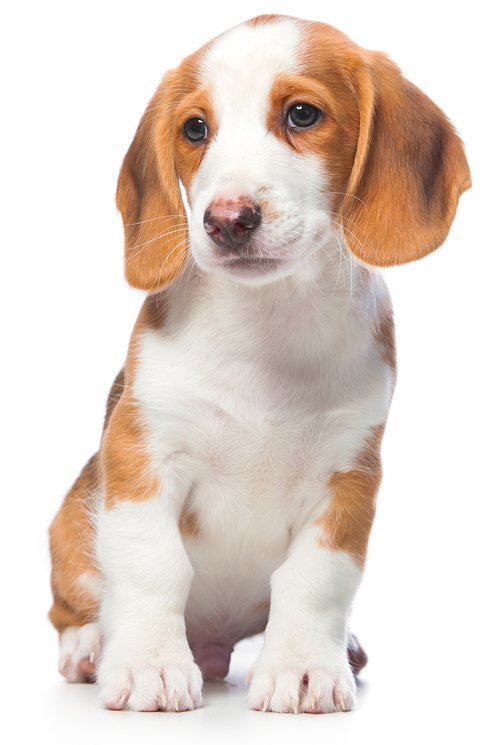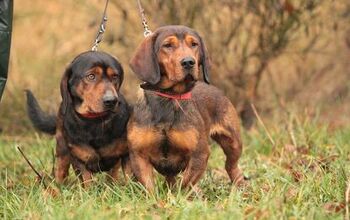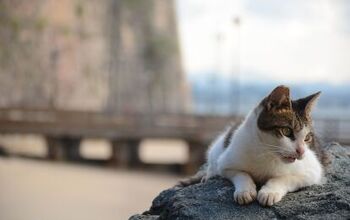Westphalian Dachsbracke


About Westphalian Dachsbracke
The Westphalian Dachsbracke comes from a long line of hunting dogs, though he is unique in his short-legged stature. When you see one of these dogs you may not expect him to be capable of much, but the first time you see him in action you will change your mind. Just imagine this little dog plowing through the brush then diving head-first into a burrow, chasing after a red fox.
The Westphalian Dachsbracke comes from a long line of hunting dogs.
The Westphalian Dachsbracke is a medium-sized, short-legged scenthound that was developed in Germany as a smaller version of the Deutsche Bracke. This breed was developed because there was a need for a short-legged dog who could plough through the brush and into burrows and caves to flush out game. Developed specifically to hunt hares, rabbits, and foxes, the Westphalian Dachsbracke is a tireless hunter with great courage and a strong work ethic as well as surprising strength and stamina for a dog of short stature.
The Westphalian Dachsbracke was developed from various French, German, and English hounds and terriers to look like a short-legged version of the Deutsche Bracke. It was developed to do what the larger brackes couldn’t – track game through the underbrush and flush it from its den.
The Westphalian Dachsbracke is a small- to medium-sized breed, so consider feeding him a high-quality dog food formulated for dog of his size. You should also keep in mind that this breed was developed for hunting, so an active or working breed might be more appropriate. Follow the feeding recommendations on the package and make adjustments as needed to suit your dog’s activity level.
The Westphalian Dachsbracke requires plenty of daily exercise as well as mental stimulation.
The Westphalian Dachsbracke was developed in Germany as a hunting companion so it generally responds well to training, though these dogs do often develop a bit of an independent streak. This breed is not aggressive or dominant by nature, but it can be a little obstinate so it requires a firm and consistent hand in training. Because this breed was developed as a working and hunting breed, it requires plenty of daily exercise as well as mental stimulation. They do particularly well when they have a job to do, especially if it involves hunting.
The Westphalian Dachsbracke is a small- to medium-sized dog that stands 12 to 15 inches tall and weighs between 30 and 35 pounds at maturity.
The Westphalian Dachsbracke was developed as a hunting breed, so these dogs are alert, active, and energetic. These dogs are also friendly and playful by nature which makes them a great choice for families with children, as long as the dog gets enough exercise. This breed generally has a balanced temperament which makes him a good family companion, though he may have a tendency to chase cats and other small household pets. You should also keep in mind that this high-energy breed needs a lot of daily exercise to prevent boredom which can lead to the development of problem behaviors. A bored and under-exercised Westphalian Dachsbracke can quickly turn into a destructive one.
The Westphalian Dachsbracke is a fairly healthy breed in general, though their lifespan is somewhat short compared to other breeds of its size. This breed is prone to hunting injuries as well as back injuries, ear infections, eye problems, and obesity.
The average life expectancy of the Westphalian Dachsbracke is about 10 to 12 years which is fairly short compared to other breeds of its size.
The Westphalian Dachsbracke was developed as a scenthound, so it is a breed born to hunt. This being the case, these dogs require a lot of daily exercise to work off their energy and to stimulate their minds. This breed can adapt to indoor life as well as life in the city as long as they have some outdoor space to run around and they get a long daily walk or run.
The Westphalian Dachsbracke are alert, active, and energetic.
This breed is not currently recognized by the AKC but it belongs to the Scenthound group for both the UKC and the FCI.
Similar in appearance to the Deutsche Bracke, the Westphalian Dachsbracke is short-legged with a long, narrow head and a long muzzle. These dogs have dense, coarse coats of short fur that comes in tricolor patterns of red to yellow with a black saddle and white markings called “Bracken marks” on the muzzle, chest, legs, collar, and tip of the tail along with a blaze on the forehead. This breed also has medium-length drop ears, gentle eyes, and a dark nose. This breed does shed but its short coat is easy to maintain with weekly brushing and as-needed bathing.
The average litter size for the Westphalian Dachsbracke is up to 6 puppies. These little dogs are full of energy and life from the get-go, so be prepared to start early with socialization and training. Westphalian Dachsbracke puppies are playful and more than a little mischievous so don’t take your eye off your puppy for more than a few seconds!
Photo credit: Alexander Raths/Shutterstock; alexraths/Bigstock

Kate Barrington is the loving owner of two cats (Bagel and Munchkin) and a noisy herd of guinea pigs. Having grown up with golden retrievers, Kate has a great deal of experience with dogs but labels herself a lover of all pets. Having received a Bachelor's degree in English, Kate has combined her love for pets and her passion for writing to create her own freelance writing business, specializing in the pet niche.
More by Kate Barrington

























